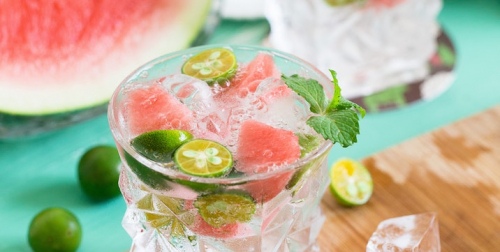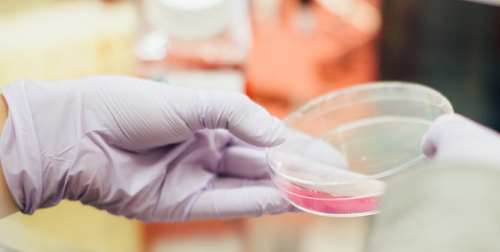In this new blog post, senior project manager Alice Hesmondhalgh discusses 6 big food and drink trends for 2019
Hopping on the trend train can be a great way to help consumers vary their diet, experiment with new ingredients, whilst keeping eating exciting. In 2018 we saw a rise in gut-friendly foods, smoothie bowls, farm-to-table produce, kombucha and much more, but what does 2019 have in store? Here’s what we think some of the most important food and drink trend predictions are:
1) Mindful drinking: There is undoubtedly a growing movement towards ‘mindful drinking’. Alcohol consumption is decreasing, with many consumers opting for a low or no alcohol beverage. As beverage companies now recognise the ‘evolution of wellness’ from a niche market to a mainstream concern, they too are embracing the low and no trend. The spirits category has already seen many innovations in this space from the launch of premium non-alcoholic spirit Seedlip to Diageo’s first ever branded ready to drink ultra low gin and tonic. We expect we will see more in 2019.

2) Mainstream veganism: Britain’s vegan population has skyrocketed in recent years, with 3.5 million people in the UK claiming they are enjoying a plant-based lifestyle (Comparethemarket.com). To keep up with this lifestyle shift big chains are adapting with incredible speed: Marks & Spencer have introduced a Plant Kitchen range, Greggs have recently released a vegan sausage roll, Domino’s and Pizza Hut recently joined Pizza Express and Zizzi in offering vegan pizzas. There’s no doubt about it that high-profile celebrities such as Venus Williams, Brad Pitt and Madonna and social influencers such as Zanna Van Dijk and Plant Based Blonde are partly to thank for the diet’s shift from a niche, yoga-synonymous subculture into the mainstream. For those who are a little less committed to this black and white diet, reducetarian and flexitarian alternatives will become their pragmatic approach for 2019.

3) Lab grown ‘motherless meat’ and proteins: As demonstrated above, traditional meat’s time at the top of the proverbial food chain may be nearing an end. Research suggests that lab grown protein will explode in popularity throughout 2019 (Baum + Whiteman) as consumers are starting to anticipate these products being available and accessible on the supermarket shelves (Mike Lee, Co-CEO of Alpha Food Labs). JUST have plans to sell their first lab grown chicken product this year. This new product will be made from cells taken from a live chicken’s feathers and developed in a lab. Similarly, Finless Foods are using cutting-edge cellular-agriculture technologies to grow marine-animal cells. They’re currently developing a lab created Bluefin tuna to go to market. But other lab designed proteins, such as lab-grown collagen, seem to be speeding ahead. So, let’s keep our eyes peeled and see which lab-grown product is the first to launch on the shelves this year.

4) Bring on the bugs: Last week, an insect-based dog food launched in the UK for the first time with the aim of appealing to the more eco-conscious dog owners. But it is not only pet brands that are introducing insects into their product lines. Fast food giant McDonald’s are exploring using insects for chicken feed to reduce reliance on soy protein. In addition, Sainsbury’s have just announced imminent plans to start stocking crickets in 250 of its stores nationwide. Both of which suggest that people are starting to experiment with insects as an alternative, and more sustainable, source of protein. It’s a category with big growth predictions; set to grow to £550 million in the next few years (Global Market Insights) with the hope that it will become the go to health snack.

5) Alternative waters: Now the tax on sugary soft drinks has come into force in the UK, Zenith Global predicts that plant-based water sales will double by 2020. For the last few years, coconut water has been the go-to drink for hydration and other claimed health benefits (diabetes, heart health). Yet in 2019, we should look out for the next wave of alternative waters. The KIND Healthy Snacks Trend Report mentions two in particular: “Maple water, which contains less than half of the sugar of coconut water, as well as cactus water, which is promoted for skin revitalisation.” We have spotted olive leaf, juniper and meadowsweet to name a few, so what will be next?

6) Waste not, want not: It is a constant fact of life that we throw away too much food. But due to a growing awareness and concern about the issue, some claim that 2019 will be the year when minimising food waste becomes a bona fide trend. The food industry is currently developing a technology to increase the shelf life of fresh foods by up to 3 times. The process is known as Hydro Protective Process (HPP). It is a cold pasteurisation technique where the food, which is previously sealed in a flexible and water-resistant package, is subjected to a high level of hydrostatic pressure. The process is currently being used by companies in North America and it is anticipated it could be coming to the UK this year.

So that’s a wrap on our predicted food and drink trends for 2019. But we’d love to hear from you – which of these trends do you see will be important for your brand or business in the next 12 months, or are there any other trends which are more relevant to you?